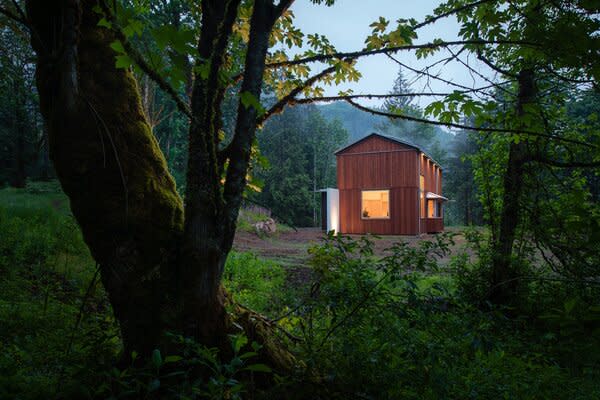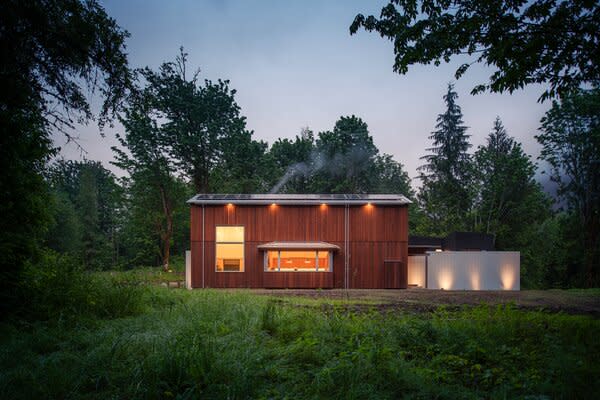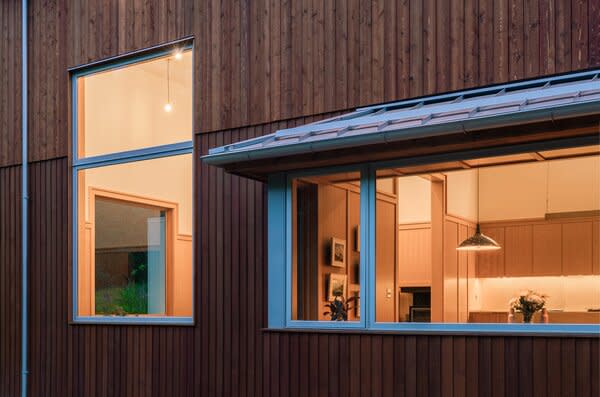A Net-Zero Mountain Retreat Looks to the Past for Inspiration
In the foothills of the Cascade Mountains, this remote getaway honors the landscape through its timeless design.

For architect Neal Andrew Barber and his wife Inga, the Northern Cascades hold a special significance. Over the years, the Seattle couple frequented the mountain range’s western slopes, where they chose to spend as many weekends as possible through all four seasons. Dreaming of their own mountain retreat, the couple began to look for a site where they could design and build a getaway to share with friends and family. "I grew up in Seattle, and the mountains east of Bellingham [Washington] have always been a favorite area of mine," says Barber, founder of Seattle-based Studio Nocturne. "We knew we wanted to find a place close to the edge of the national forest here."
Having zeroed in on location, the couple started their property search in 2019, but initially turned up empty. "We started looking for land in the mountains east of Bellingham at the end of 2019, but nothing felt right," Barber says. After COVID-19 stalled their plans further, they eventually came across a captivating parcel. "We found this secluded property with a meadow populated with mature bigleaf maples," shares Barber. "This clearing, carved out of the surrounding evergreen forest, seemed like the perfect retreat from the hustle and bustle." Securing the property shortly thereafter, plans were soon underway to design a remote oasis that would bring pause from the pace and routine of their lives in the city.
For Barber, the English picturesque informed the home’s design and siting—he found himself particularly inspired by period drawings of ruined castles and abbeys in the landscape. "We wanted it to feel like something that could have been there for decades and only recently rediscovered," Barber says of the home’s concept. "The house was to be our ‘ruin in the landscape.’"
Tasked with introducing a new structure into the seemingly untouched forest setting, Barber thought first and foremost about the home’s visual impact on the landscape. "The most important vantage point considerations were actually views of the house from the outside," he shares. Pulling from his graduate studies in picturesque travel, Barber found similarities with alpine huts of the 18th century. "I found that these buildings do more than provide the necessary shelter and amenities to facilitate travel into and [around] the mountains," says Barber. "They also function as focal points in the landscape, as if they were subjects in a picture."
See the full story on Dwell.com: A Net-Zero Mountain Retreat Looks to the Past for Inspiration
Related stories:




